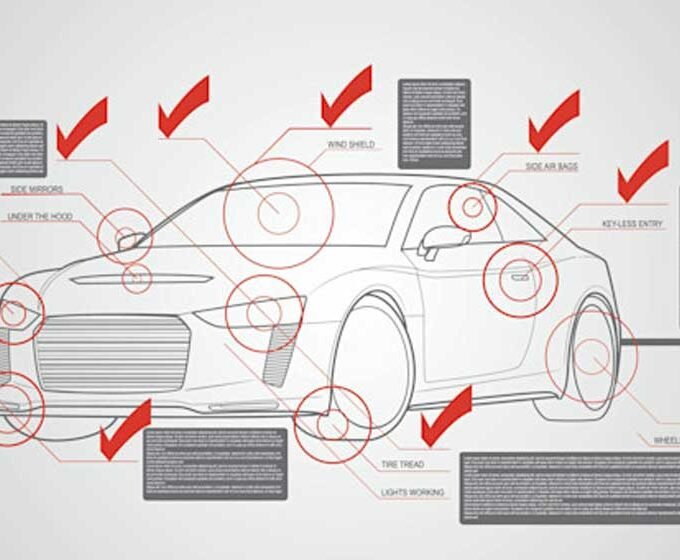Truck driving is a profession that demands high levels of vigilance and adherence to safety protocols. Every day, drivers face numerous risks that can be mitigated with the right knowledge and practices.
This article presents eight crucial safety tips designed to protect truck drivers on the roads.
1. Stay Alert: Managing Fatigue and Distracted Driving
Managing fatigue and avoiding distractions is critical for truck drivers to maintain safety on long hauls. Driving fatigue is a major factor in many road incidents, as it significantly impairs reaction times and decision-making abilities. Drivers are advised to adhere strictly to Hours of Service regulations to ensure adequate rest.
The use of mobile devices while driving is a common distraction that must be avoided; instead, hands-free technology should be utilized for necessary communications. Regular breaks are also essential, not just for rest, but to refresh focus and reduce the risk of accidents.
2. Regular Vehicle Inspections: A Pre-Trip Necessity
Conducting regular vehicle inspections is essential for ensuring the safety and operational efficiency of trucks. Before each trip, drivers should perform a thorough check of their vehicle, focusing on critical components such as brakes, tires, lights, and steering mechanisms. This proactive approach helps identify potential issues that could lead to breakdowns or accidents on the road.
Compliance with these inspection protocols not only enhances safety but also aligns with regulatory standards set by transportation authorities. Maintaining a detailed log of these inspections can assist in monitoring vehicle health over time and ensure timely maintenance.
3. Adhering to Speed Limits: Safety Before Schedule
Adhering to speed limits is crucial for truck drivers to ensure road safety and reduce the risk of accidents. Speeding is one of the leading causes of traffic incidents and fatalities, particularly in large vehicles that require longer stopping distances.
Observing speed limits not only enhances the safety of the driver but also that of other road users. It also reduces fuel consumption and wear on the vehicle, contributing to lower operational costs and environmental impact. Moreover, compliance with speed regulations helps avoid costly fines and penalties, maintaining the driver’s professional reputation.
4. Weather Awareness: Adapting to Driving Conditions
Weather conditions significantly impact driving safety, especially for truck drivers managing large vehicles. Being aware of weather forecasts can prepare drivers for adjustments in driving techniques and routes. In inclement weather, such as snow, rain, or fog, reducing speed and increasing following distances are critical adjustments to maintain control.
Additionally, ensuring that the vehicle’s lights and windshield wipers are in good working condition enhances visibility. Drivers should also be trained to handle hydroplaning and skidding, skills that can prevent accidents when roads are slick.
5. Secure Cargo Loading: Preventing Shifts and Spills
Secure cargo loading is essential for the safety of truck operations, preventing cargo shifts and spills that can cause accidents. Proper loading techniques ensure that weight is evenly distributed, which is vital for maintaining vehicle stability and control.
Drivers and loading teams must use appropriate restraints like straps and bars to secure all cargo, as unsecured loads can shift suddenly, leading to loss of control. Regular checks during stops are advisable to ensure that the cargo remains securely fastened. Adhering to these practices reduces the risk of road incidents, protecting both the cargo and other road users.
6. Effective Communication: Staying Connected With Dispatch
Effective communication with dispatch is vital for the safety and efficiency of trucking operations. Staying connected allows drivers to receive real-time updates about traffic, weather, and route changes, helping them make informed decisions on the road. Modern technology such as GPS and mobile communication systems facilitate seamless communication, ensuring drivers are always aware of their environment and operational needs.
Regular check-ins with dispatch help manage driving hours and maintain log accuracy, which is crucial for compliance with regulations. Additionally, this constant line of communication provides a safety net in case of emergencies or unexpected situations.
7. Emergency Preparedness: Essential Skills and Equipment
Emergency preparedness is crucial for truck drivers to effectively handle unexpected situations on the road. Essential skills include knowing how to use fire extinguishers, administer basic first aid, and manage vehicle breakdowns safely. Equipping trucks with emergency kits containing flares, reflective triangles, and extra water and food is also vital.
Training in these areas enhances a driver’s ability to respond swiftly and appropriately, potentially saving lives and preventing further incidents. Regular drills and training updates can also ensure that drivers remain proficient in these critical skills, ready to act when needed.
8. Zero Tolerance: Upholding Sobriety on the Road
Upholding sobriety on the road is critical for the safety of truck drivers and the general public. Strict policies against alcohol and drug use reflect the industry’s commitment to zero tolerance.
The return to duty process ensures that drivers who violate these policies undergo necessary evaluation, treatment, and follow-up testing before resuming driving duties. This process not only helps in maintaining safety standards but also supports drivers in achieving lasting sobriety. Implementing these rigorous standards protects lives and upholds the integrity of the trucking profession.
Conclusion: Driving Toward Safer Roads
Safety is paramount in the trucking industry, where every decision on the road influences not just the driver but also public safety. By adopting these eight essential tips, drivers ensure they are prepared for a range of situations, from adverse weather conditions to emergency scenarios.
















